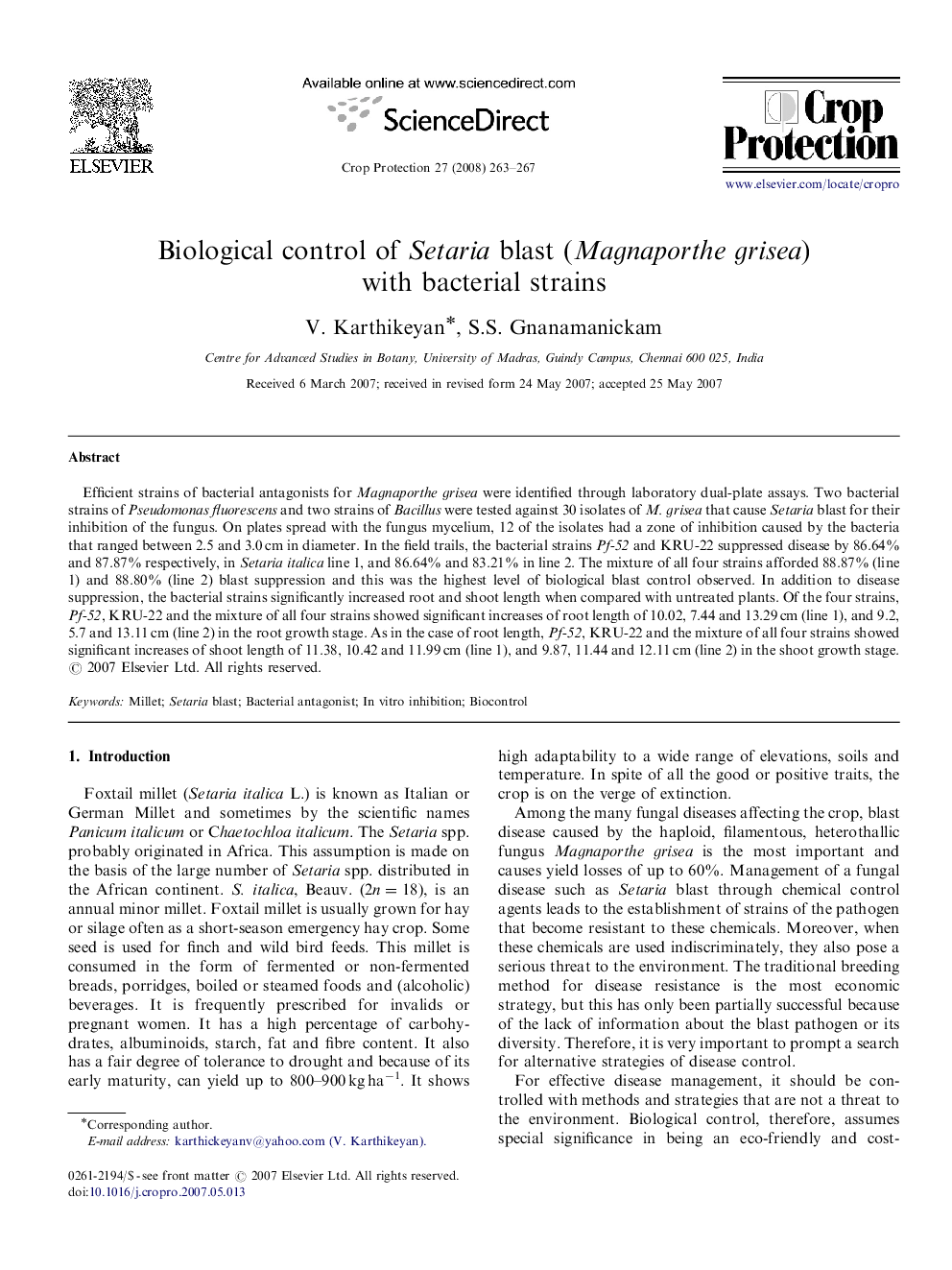| Article ID | Journal | Published Year | Pages | File Type |
|---|---|---|---|---|
| 4507821 | Crop Protection | 2008 | 5 Pages |
Efficient strains of bacterial antagonists for Magnaporthe grisea were identified through laboratory dual-plate assays. Two bacterial strains of Pseudomonas fluorescens and two strains of Bacillus were tested against 30 isolates of M. grisea that cause Setaria blast for their inhibition of the fungus. On plates spread with the fungus mycelium, 12 of the isolates had a zone of inhibition caused by the bacteria that ranged between 2.5 and 3.0 cm in diameter. In the field trails, the bacterial strains Pf-52 and KRU-22 suppressed disease by 86.64% and 87.87% respectively, in Setaria italica line 1, and 86.64% and 83.21% in line 2. The mixture of all four strains afforded 88.87% (line 1) and 88.80% (line 2) blast suppression and this was the highest level of biological blast control observed. In addition to disease suppression, the bacterial strains significantly increased root and shoot length when compared with untreated plants. Of the four strains, Pf-52, KRU-22 and the mixture of all four strains showed significant increases of root length of 10.02, 7.44 and 13.29 cm (line 1), and 9.2, 5.7 and 13.11 cm (line 2) in the root growth stage. As in the case of root length, Pf-52, KRU-22 and the mixture of all four strains showed significant increases of shoot length of 11.38, 10.42 and 11.99 cm (line 1), and 9.87, 11.44 and 12.11 cm (line 2) in the shoot growth stage.
